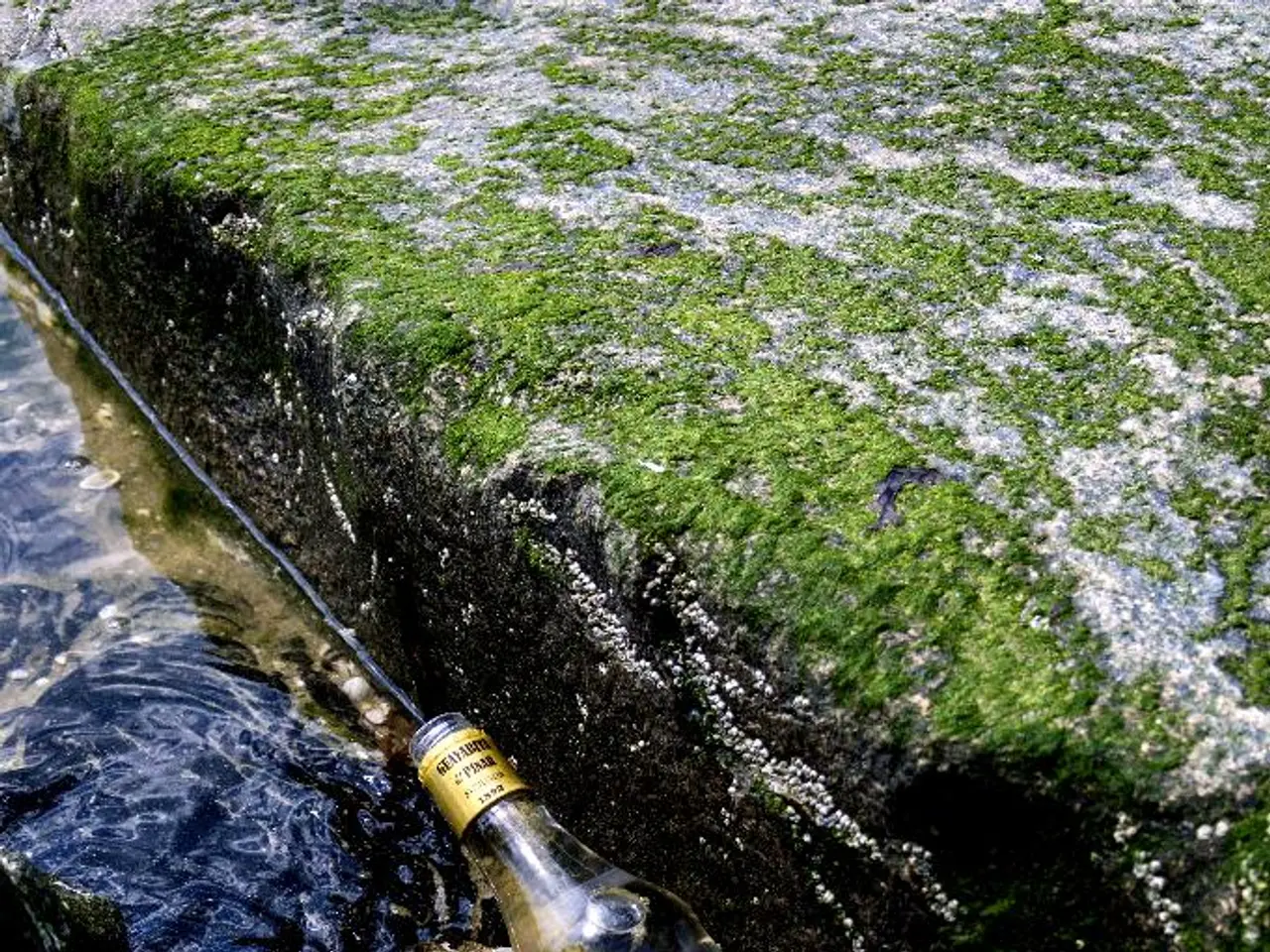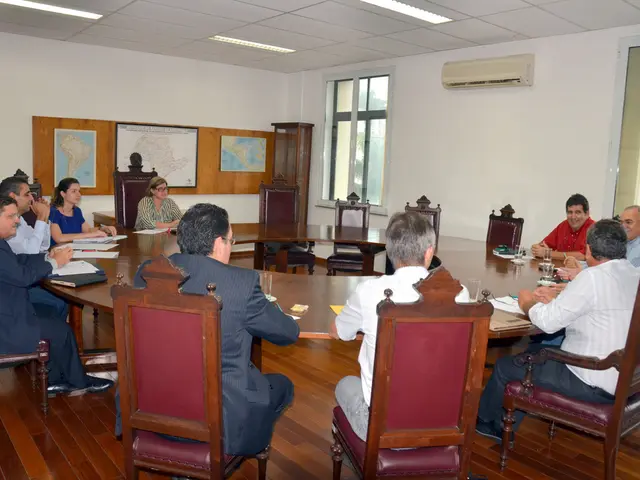Algae as an alternative to fossil plastic: a possible solution for pollution?
=========================================================================================
In a world where plastic has become an integral part of our daily lives, its impact on our ecosystems has become a pressing concern. From the beaches we enjoy to the forests we explore, the oceans we dive in, and the mountains we climb, plastic waste has invaded virtually every corner of our planet [1][2].
The scourge of plastic pollution is not confined to the beaches and oceans we often associate with this problem. It has been found in forests, meadows, rivers, and mountains as well [1][2]. This ubiquitous presence poses a significant threat to both animal and human health.
Every minute, an estimated 15 tons of plastic waste are dumped into the sea worldwide [3]. This alarming figure underscores the urgency of finding solutions to curb this global crisis.
The production of synthetic plastic material, derived from petroleum, amounts to approximately 460 million tons annually [4]. This petroleum-based origin is a significant issue, given the environmental and energy implications of oil extraction.
Animals, both large and small, are suffering and dying due to the ingestion of everyday objects, including plastic waste [5]. This tragic reality underscores the need for immediate action.
Current solutions and innovations to reduce plastic pollution in deep-sea ecosystems focus on advanced cleanup technologies, plastic prevention policies, and global regulatory efforts.
One promising approach is the development of advanced ocean cleanup technologies. These systems incorporate automated collection devices and new filtering systems using magnets and specialized materials to remove microplastics from water without harming marine life [1]. These systems operate continuously, particularly in high-traffic shipping areas, and can clean thousands of liters of water per hour [1].
Chemical pollutant monitoring systems provide real-time data on water quality, helping to detect pollution events quickly and enabling timely response and enforcement of environmental regulations [1].
Global policy and treaty efforts, such as the UN Global Plastic Treaty negotiations and commitments from over 175 countries to reduce plastic production and pollution, aim for legally binding regulations throughout the entire plastic lifecycle—from production, use, to disposal—to prevent plastics from reaching the ocean, including deep-sea habitats [2][3][4][5].
Corporate accountability measures, like Extended Producer Responsibility programs, plastic taxation, and supply chain transparency requirements, push manufacturers to reduce plastic waste and invest in reusable packaging systems, thereby minimizing new plastic inputs to oceans [2].
Community and volunteer cleanup initiatives complement technological and policy efforts by physically removing plastic debris from coastal areas and preventing further inputs into ocean systems [1][2].
While much focus remains on preventing plastics from entering marine environments, these combined innovations—from scientific technology to international law—constitute the most promising current strategies to curb plastic pollution deep in the oceans and protect deep-sea ecosystems.
However, the fight against plastic pollution is far from over. Microscopic plastic particles have been found in human organs, underscoring the need for continued vigilance and action [6]. It is our collective responsibility to ensure a cleaner, healthier future for all.
References:
[1] The Ellen MacArthur Foundation. (2021). New Plastics Economy Global Commitment. Retrieved from https://www.ellenmacarthurfoundation.org/work/new-plastics-economy/globalcommitment
[2] United Nations Environment Programme. (2021). Sustainable Ocean Business Conference. Retrieved from https://www.unep.org/events/sustainable-ocean-business-conference-2021
[3] World Economic Forum. (2021). Ocean Plastics: The Business Case for Action. Retrieved from https://www.weforum.org/reports/ocean-plastics-the-business-case-for-action
[4] National Geographic. (2021). Plastic Pollution: The Great Pacific Garbage Patch. Retrieved from https://www.nationalgeographic.org/encyclopedia/great-pacific-garbage-patch/
[5] World Wildlife Fund. (2021). Plastic Pollution. Retrieved from https://www.worldwildlife.org/issues/plastic-pollution
[6] European Commission. (2021). Microplastics in the Environment. Retrieved from https://ec.europa.eu/environment/chemicals/waste/tsw/microplastics_en.htm
- The intersection of science, health-and-wellness, and environmental-science is crucial as microscopic plastic particles have been discovered in human organs, necessitating continued research and action.
- The climate-change crisis intertwines with the plastic pollution issue, as the petroleum-based production of synthetic plastic material contributes significantly to greenhouse gas emissions.
- In the quest to protect deep-sea ecosystems, therapies-and-treatments may play a role, with innovative cleaning technologies offering healing solutions to the ailing oceans.




